Dodge restaurants
• Dodge restaurants
The next time you decide to dine in any restaurant, try to follow these psychological tricks.
I had dinner with hot dishes in a modern Italian restaurant when a waiter came up to me and asked: "Do you want to learn about the dish of the day?"
Sure!
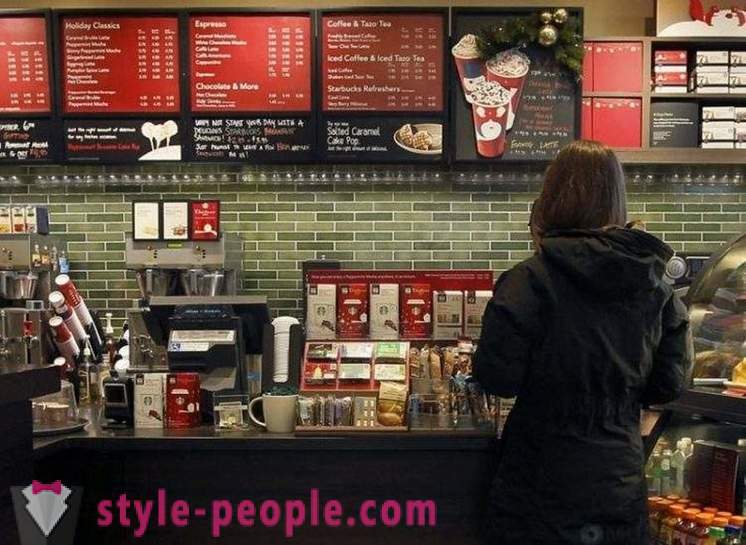
The waiter assured tone told me about the dishes of the day, using words I had no idea about the existence, and gave me a few minutes, so I thought about my order.
What the hell did he just say?
I continued to look at the menu, but still could not figure out what each dish consisted.
Why did not he just came up and said: "Three meatballs with sauce on a small plate"? And why is this dish I had to pay 25 dollars?
I did not want to seem greedy or petty, so I ate what I was given, with no complaints.
After dinner, the waiter recommended the most expensive dessert in the menu. The girl with whom I was in the evening on a date, said that sounds great, and, of course, I ordered two servings.
Thank you very much, the waiter.
Score came in the amount of more than $ 100, and I thought it would be better if we went to some diner.
Every day, restaurants use basic psychology to manipulate the visitors (like me, for example) and get them to spend and eat more than you need. I never understood how they do it until they stumbled upon an answer on Quora Neil Eisenberg.
It is better, he will explain everything.
1. Too frequent use of the words "a dish cooked on a slow fire" and "handmade"
Restaurants use figurative language to make dishes from the menu more attractive. Vivid descriptions tend to increase sales by 27 percent, according to a study conducted by scientists from Cornell University. The most common words and phrases in the descriptions - is "handmade", "dish cooked on a slow fire," "golden brown", "hand-selected", "fresh from the oven" and so on. They urge the client to the sensory experience that the restaurant wants to convey.
2. There is a reason why the institutions in the menu as many photos
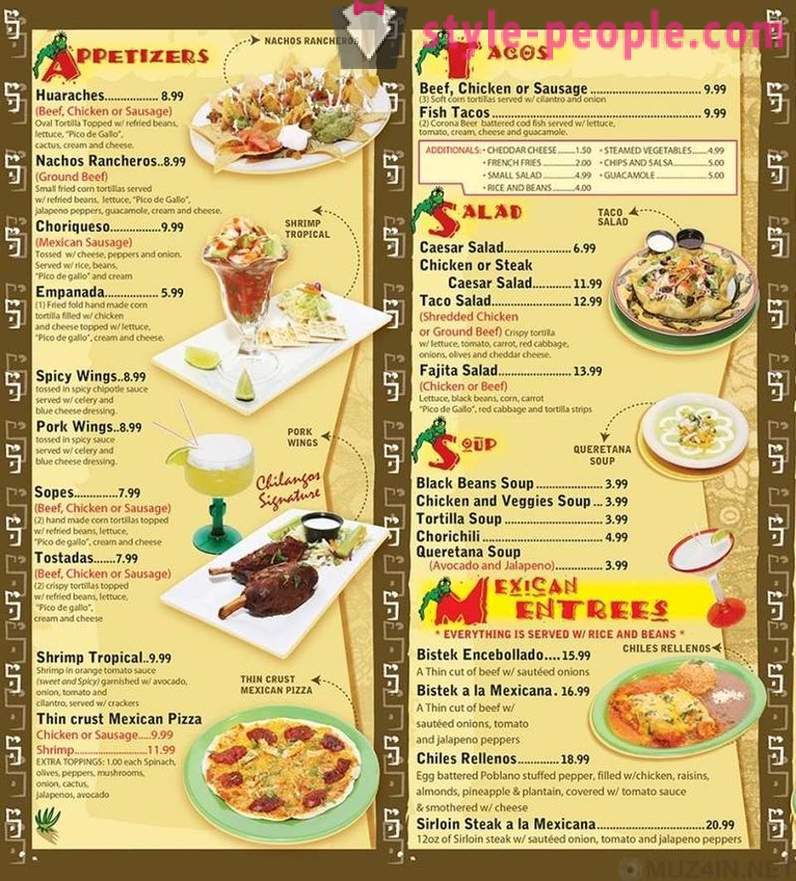
The restaurant uses photographs to encourage visitors to purchase a specific dishes from the menu. Attractive picture next to this or that food is able to increase its sales by as much as 30 percent.
3. The most successful restaurants restrict your choice of
Restaurants restrict your choice of a fixed menu. In fact, they take responsibility felt by people when choosing what to eat.
From a psychological point of view, the fast-food restaurants more effectively limit the range of six menu items for one category, and gourmet establishments - seven or ten.
4. Every successful restaurant uses the same menu design
Restaurant menu design is developed with the same attention to detail with which they prepare your food.
The upper right corner - the most important. This is the place to which you immediately throw his eyes. It was there that usually place the most profitable dishes. On the upper right corner of your eyes tend to move to the left, where refreshments are. Immediately below you will find a snack salads.
Another trick - create an empty space around the most profitable dishes, placing them within or separate from the rest of options. This helps to attract the attention and promotes a higher level of sales. 5. Expensive food at the top of the
Restaurants scrutinize the way you read. They analyze eye movements, which you can understand how people read certain things.
According to a study conducted by Cornell University, the third of the visitors are likely to order the first thing they think will fall. As a result, restaurants are trying to locate the most beneficial for them to offer the top right corner. This strategy is based on the primacy effect, which is that people are best stored items in the list.
Another reason why this works is that when he saw the top of the dish to the highest bidder, you find the rest of the menu quite reasonable cost.
The restaurant focuses on main dishes. According to research, the majority of visitors are viewing all menus, flipping through it like a book, but focused most of their attention to the main dishes.
6. There's a reason that the menu sometimes include prohibitively expensive dish
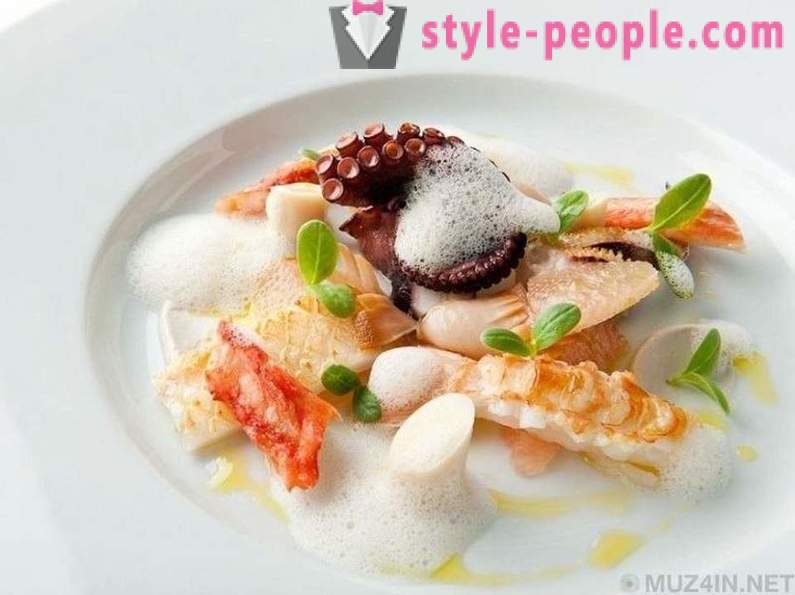
Restaurants use expensive dishes to draw your attention to a cheaper menu items. Expensive meals act as bait. The bottom line is that you will most likely not going to order them, and will be looking for cheaper alternatives, as it would seem more reasonable.
7. Fancy font makes special dishes
Restaurants will visually highlight dishes framework, bold, color or fancy fonts and more to accompany their photos to make them seem more attractive and special. However, first-class restaurants are trying to avoid this strategy, so the menu does not look "gaudy" (no pun intended). 8. Restaurants know that one number means a lot when it comes to pricing and your wallet
Restaurants are very cleverly used the figures. Designers menu (yes, indeed, there are people who make a living by developing institutions menus) know that prices ending in 9, for example, $ 9, 99, generally refer to values rather than quality. As a result, most of the prices are now at an end, 95 instead of 99, because they seem to be more "pleasant".
A growing number of restaurants trying to assess the dishes on the menu without any cents because the menu is a clean, simple and easy to read.
9. Restaurants try our best to make sure that you did not think about money
Restaurants do not use dollar signs. dollar sign - one of the main things that are now restaurants avoided because it immediately reminds visitors that they spend the money.
According to Cornell University, the guests, which displays a menu without dollar signs, spend a lot more money in the restaurant, than those who received a menu with dollar signs.
10. Names like "Pretzels Aunties Anne" make people think that they are eating homemade food
Restaurants associate food with family members. Visitors are particularly attracted to the names of relatives, such as a grandmother, aunt or grandfather. For example, people are more likely will order a "Grandma's homemade cookies" or "famous apple pie Aunt Clara". Names can also cause nostalgia among the visitors.
11. The colors of the restaurant enhances the desire of visitors to stay and eat more food Yellow - irritating color that makes people want to go. Yellow color is commonly used at fast food restaurants. Red is a stimulant and has attracted attention. Red appetizing and subconsciously causes people to eat more. McDonald's, Burger King, In-N-Out Burger and El Pollo Loco used yellow and red in their logos. Why? Because a) they want you ordered food ton, and b) they want you to leave immediately, to make room for other customers.
Green relaxing. People associate the color green with nature and a sense of comfort. Green walls - a good idea for restaurants and other establishments such as Starbucks, which encourage visitors to stay longer and do more orders.
12. Try to ignore everything around
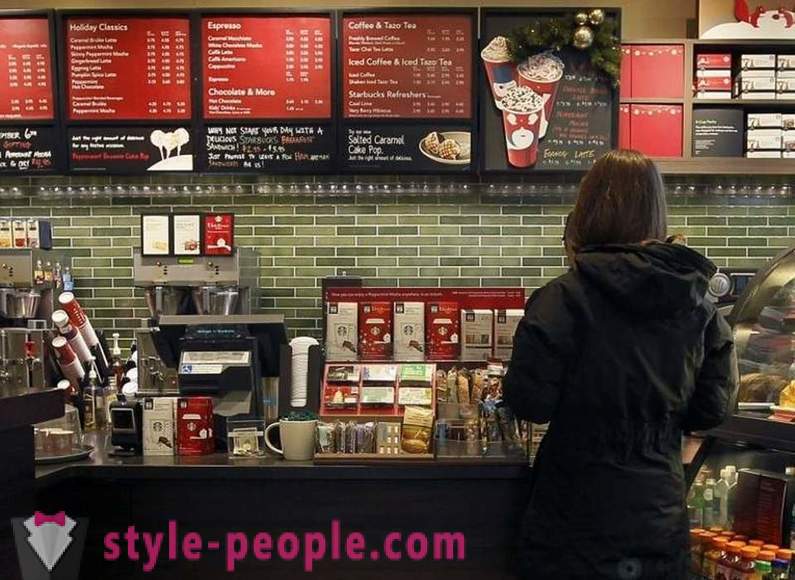
The closer you are to something, the more likely it is that you buy. In areas that are close to the cashier at fast food restaurants, full of all sorts of attractive products for impulse purchases. Starbucks - the king in this regard. There are gizmos sold for a dollar or less.
13. "Do you want a large portion of French fries?"
A greater number of options makes spend more. Several years ago, offered a standard size food portions at fast food restaurants. Today, the different portions can be ordered in such places, so people who are inclined to buy "large" portion switched to more expensive "superportsii". Pay a dollar more for a large glass of soda and a large portion of fries seems a trifle for most people. 14. Restaurants deliberately offer their dishes of the day orally
Dish of the day visitors are offered almost always verbal. Fine restaurants know that people do not want to ask the price, because they are afraid to seem petty. They also know that a man on a date is more likely to accept the offer to the waiter to order expensive wine, dessert or aperitif.
15. The Future of catering is becoming more advanced
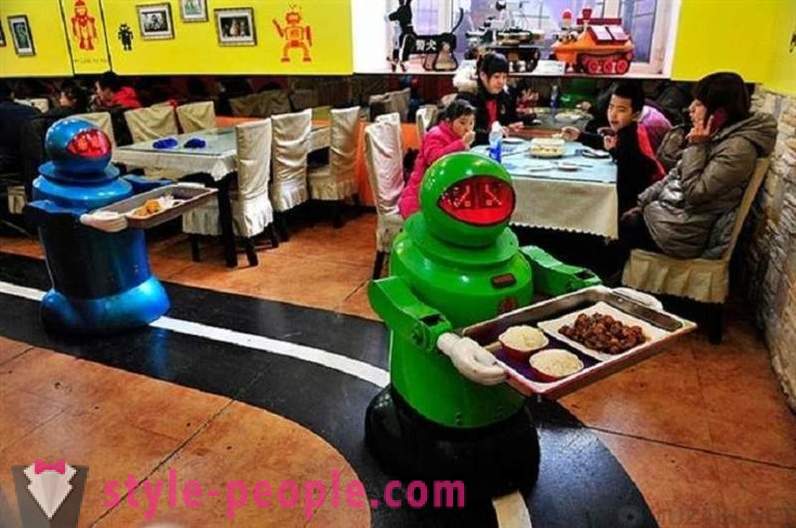
What's on the horizon? In the future, menu boards will be able to read your mind. Or, at least, to guess your taste preferences. Digital menu boards with dishes will soon be displayed on the basis of specific customer tastes.
Personalized menu will be available through mobile applications that help companies keep track of your orders. Starbucks claims that the proposals sent to customers via e-mail, based on their past orders.













































